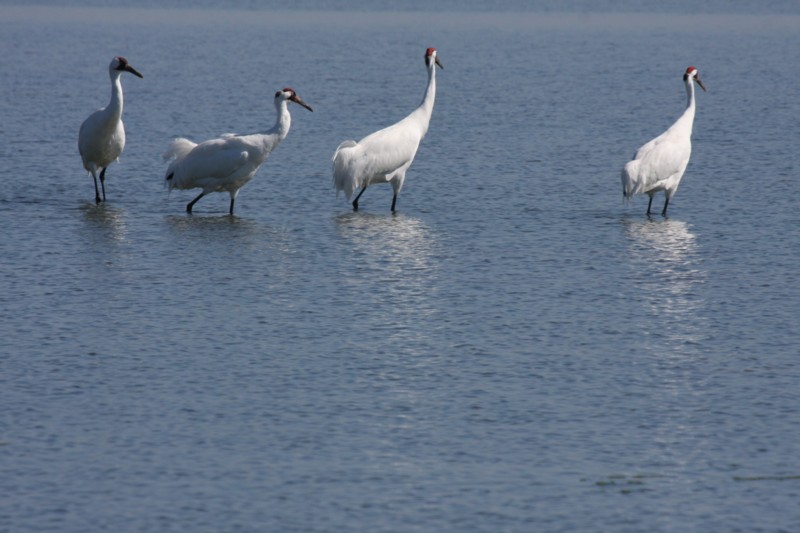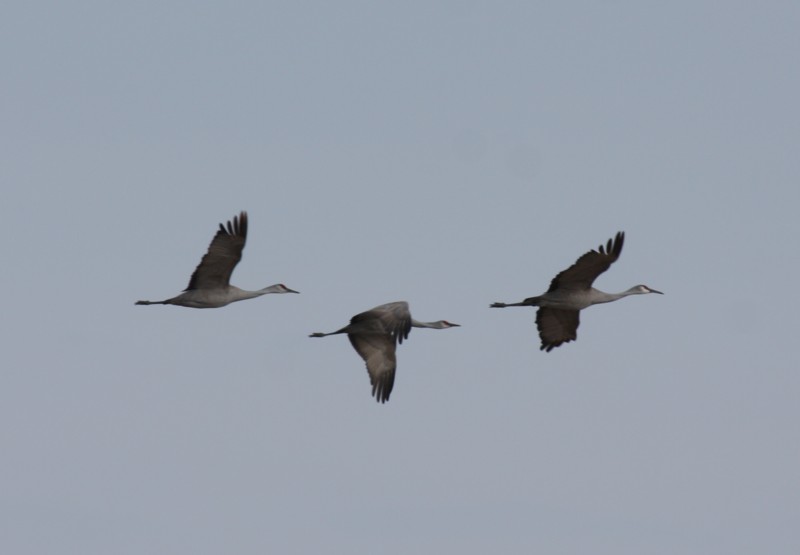Yet another article about how Whooping cranes had a good breeding summer
North America’s imperilled whooping crane population — which had experts in a panic just 18 months ago after nearly 10% of the giant birds died in their wintering grounds in Texas — has rebounded after a banner summer season in Northern Canada where a near-record number of chicks were born.
The unexpected resurgence of the last surviving natural flock of the continent’s tallest bird — one of Canada’s most endangered species — has wildlife officials on the Gulf Coast in Texas excitedly awaiting this fall’s arrival of the cranes after their epic, annual flight south from Wood Buffalo National Park along the Alberta-Northwest Territories border.
snip
“With 46 chicks fledging from a record 74 nests in August 2010, the flock size should reach record levels this fall, expected somewhere around 290,” U.S. Fish and Wildlife biologist Tom Stehn states in the latest status report on the species.
The 2010 baby boom has been attributed to ideal water conditions in Wood Buffalo, where the cranes are highly protected and carefully monitored during their annual summer stay.
This year, a number of birds was also captured and fitted with satellite tags to allow better tracking of the flock in the coming years. Individual birds can live longer than two decades.
Whooping cranes have been reported at Quivira NWR in Kansas. Hopefully, it will work out for me to go down there next week.






